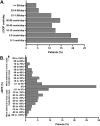Differential Cost-Sharing Undermines Treatment Adherence to Combination Therapy: Evidence from Diabetes Treatment
- PMID: 34212316
- PMCID: PMC8342747
- DOI: 10.1007/s13300-021-01098-8
Differential Cost-Sharing Undermines Treatment Adherence to Combination Therapy: Evidence from Diabetes Treatment
Abstract
Introduction: The objective of this study was to measure the influence of differences in out-of-pocket (OOP) costs for type 2 diabetes (T2D) medications on within-patient adherence behavior towards combination drug therapy regimens.
Methods: This was an observational, retrospective, paired sample study in patients with T2D using longitudinal pharmacy data from the 2009-2014 Medical Expenditure Panel Survey (MEPS) augmented with socio-demographic factors. We took a within-patient approach to minimize confounding effects by including patients who maintained the same number of diabetes drug classes over 2 years of MEPS. For each patient, we selected the most and least costly drug classes in the second year and examined their corresponding adherence behavior measured by medication possession ratio. The primary hypothesis tested the significance of the correlation between magnitude of the OOP cost difference and behavioral response in adherence.
Results: Analysis included 1189 patients representing over 4.2 million US residents with T2D. A significant negative correlation (p < 0.001) was observed between the differences of OOP costs and adherence to the most and least costly medications compared within patients. Reduction in adherence to the most costly medication was generally observed when the difference in OOP costs was greater than $33/month. A greater variability in adherence was observed when the cost difference exceeded $2.39/month as compared to other cost difference ranges (p < 0.001), indicative of choices being made.
Conclusions: As OOP costs increased, adherence variability increased initially until a cost threshold, beyond which the adherence to the more costly medication decreased. In addition to OOP cost, adherence was also influenced by type of medication and self-perception of health. Given the complex correlation between OOP costs and adherence to medication, we suggest a careful approach to cost-sharing in the current insurance drug design and relevant insurance policies.
Keywords: Adherence; Diabetes combination therapy; Healthcare out-of-pocket costs; Insurance design; Medical Expenditure Panel Survey (MEPS).
© 2021. The Author(s).
Figures



References
-
- Feldman R, Dowd B. A new estimate of the welfare loss of excess health insurance. Am Econ Rev. 1991;81(1):287–301. - PubMed
-
- Feldstein MS. The welfare loss of excess health insurance. J Polit Econ. 1973;81(2):251–280. doi: 10.1086/260027. - DOI
-
- Centers for Medicare & Medicaid Services. NHE Fact Sheet, 2017 Baltimore. 2017. http://www.cms.gov/Research-Statistics-Data-and-Systems/Statistics-Trend.... Accessed 1 Jan 2021.
-
- Claxton G, Rae M, Long M, Damico A. Employer health benefits: 2018 annual survey. San Francisco: The Kaiser Family Foundation.
LinkOut - more resources
Full Text Sources
Research Materials

